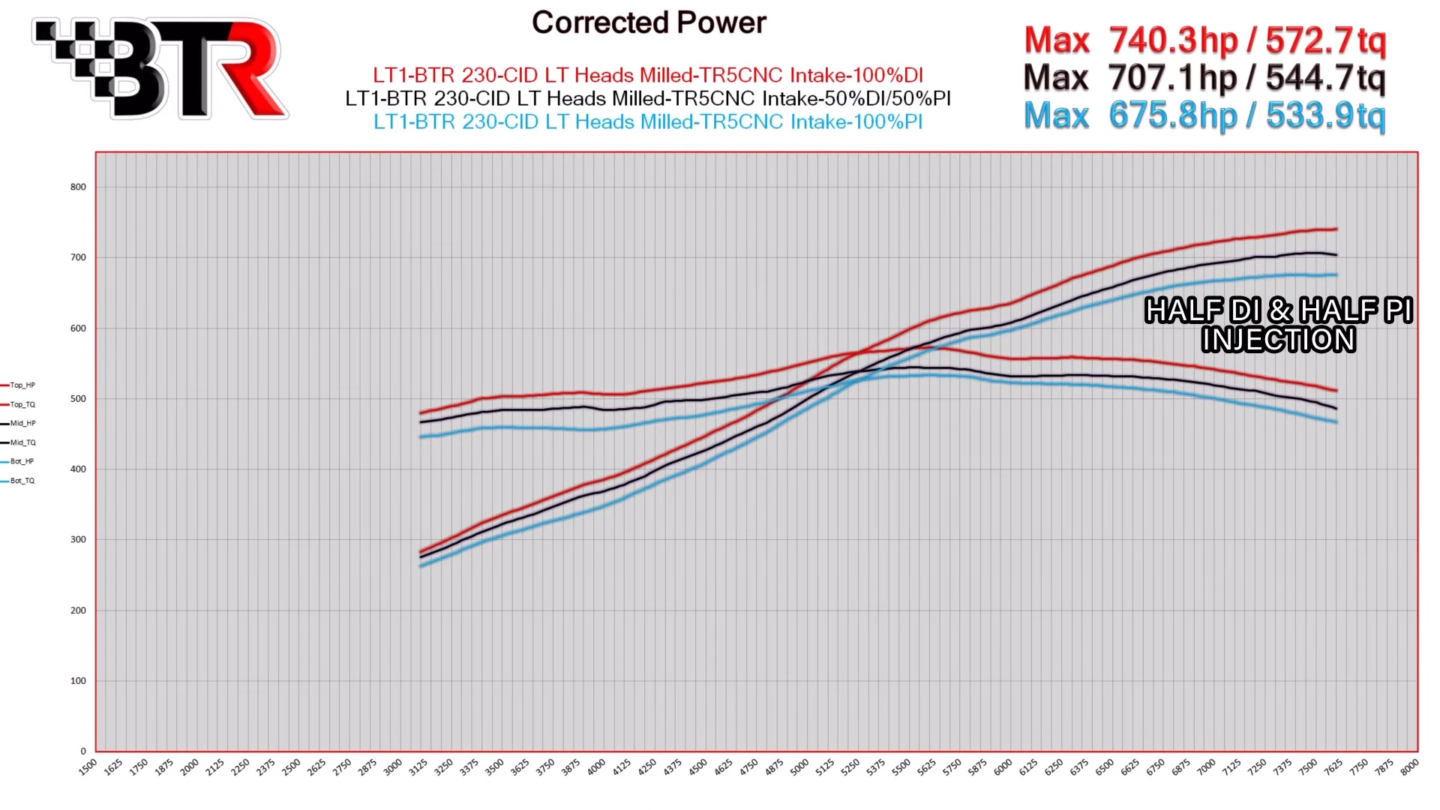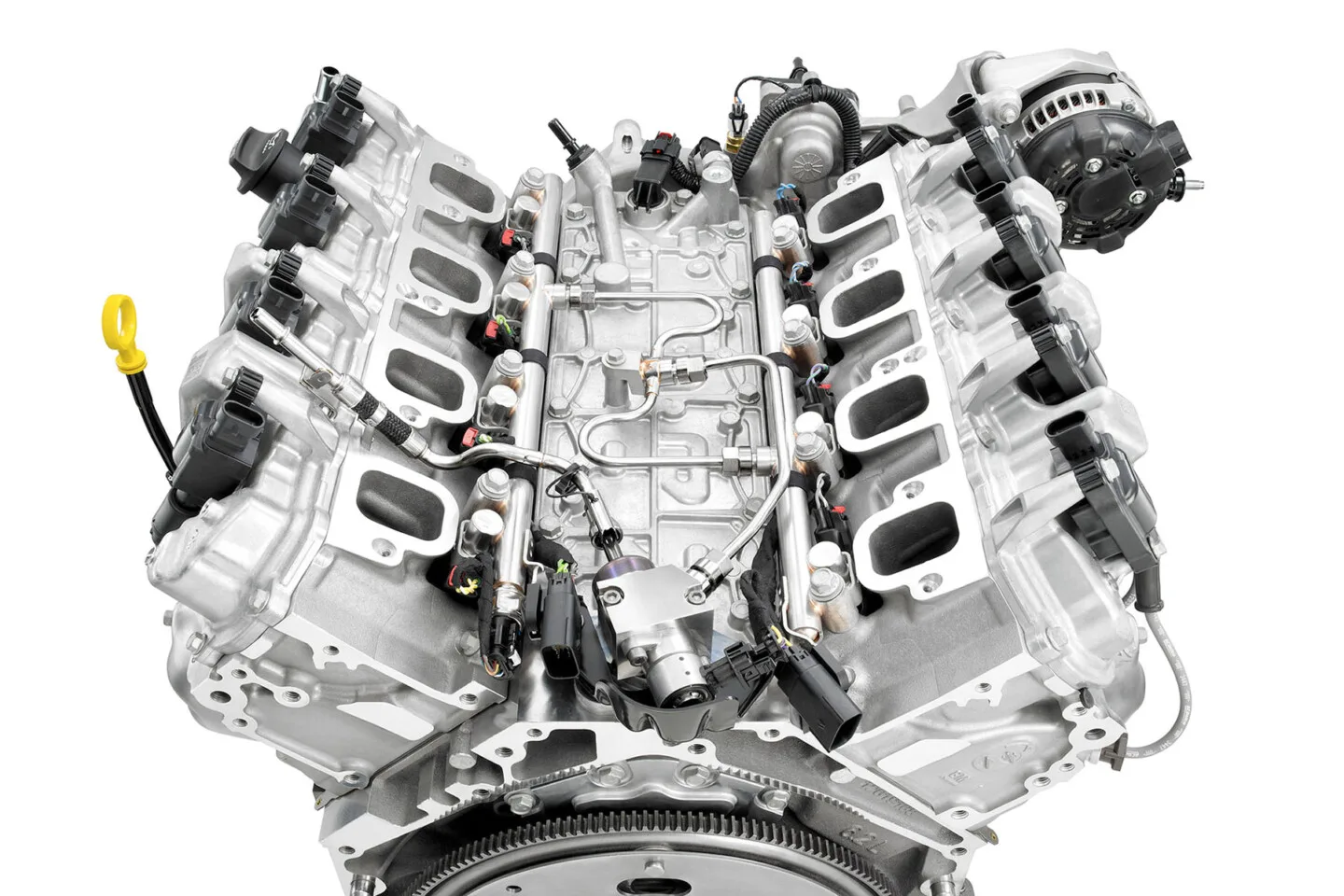Ever since direct injection has come on the scene with the Gen-V family of Chevrolet small-block V8s, we’ve seen numbers from mild engine combinations rivaling those of full-on race engines of generations past. If you know Brian Tooley of Brian Tooley Racing (BTR), you know that a mystery like that isn’t going to go unsolved, let alone unexplored, for long.
He and his team had their hypotheses on why the direct-injected engines seemed to make so much more power than similar port-injected combos, but like anyone worth their salt, they wanted to test their theories on the dyno to either prove or disprove them. While the easy conclusion is that direct injection allows for a higher compression ratio and thereby larger numbers, what if both injection methods were tried on the same engine? That should level the playing field.
Under those conditions, Tooley’s hypothesis was that the latent heat of evaporation provided by a port-injected combination would make more power on the dyno than the direct-injected setup, much in a similar way as carburetor proponents say carburetors will outperform fuel-injected combinations on the dyno. However, his hypothesis was destroyed in an A-B-A dyno test, showing the port-injected configuration losing 75 horsepower over the direct-injected setup.
Instead of dwelling on having the wrong hypothesis, he immediately fell back to the scientific method and looked at the data. After poring over the information from the tests, Tooley found a correlation between the airflow and power results, and went back to the dyno to test his new hypothesis.
This time, the data came back to support his hypothesis that the fuel in the intake tract was displacing air (it does have mass, after all) by removing the fuel from the airflow into the port, there would be additional room for air. To further test his theory, they made several pulls with 50 percent of the fuel provided by port injection and 50 percent provided by direct injection. The result confirmed the theory on two fronts.

Here you can see that the second round of dyno tests supported Tooley’s new hypothesis regarding direct vs. port injection.
First, the power result was right in the middle of the 100-percent port-injected tests, and 100-percent direct-injected tests. Secondly, the airflow numbers into the cylinder were right at half the difference between the two configurations’ airflow numbers, seemingly solving…
Click Here to Read the Full Original Article at DragzineDragzine…

